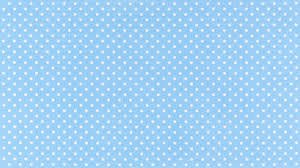
polka dot background
The polka dot is more than just a playful design—it is a timeless pattern that has left its mark on fashion, art, design, and digital culture. Whether you’re dressing up for a party, creating a website, or designing packaging, a polka dot background adds character, rhythm, and joy.
But what gives polka dots such staying power? In this article, we’ll explore the fascinating origin, symbolism, and creative applications of this classic pattern. You’ll also learn practical tips on how to use polka dots effectively in modern design.
What Is a Polka Dot Background?
A polka dot background is a surface filled with repeating, evenly spaced circles, typically arranged in a grid or offset pattern. The dots are usually uniform in size, but modern designers often experiment with scale, color, and layout to create a more dynamic effect.
These backgrounds are used in:
- Fashion design
- Digital interfaces
- Print materials
- Textile patterns
- Interior decor
You can explore modern examples of polka dots in graphic projects on Behance, where designers around the world showcase their creative uses of this pattern.
History and Origin of Polka Dots
The word “polka dot” dates back to the mid-1800s, a time when the Polka dance was sweeping across Europe and America. While there is no technical link between the pattern and the dance, the term “polka” became associated with anything trendy or upbeat—including this dotted textile design.
By the 1920s, polka dots became popular in fashion, especially in women’s dresses. In the 1950s, they were a symbol of femininity and elegance, made iconic by figures like:
- Marilyn Monroe
- Lucille Ball
- Minnie Mouse (whose famous red dress with white dots became a cultural icon)
The popularity of polka dots in vintage fashion helped solidify the pattern as a nostalgic yet stylish choice that continues to return in cycles.
Symbolism of Polka Dots
Polka dots may seem light-hearted, but they carry deep psychological and cultural associations:
- Balance and order: Their symmetrical layout conveys a sense of calm and structure.
- Playfulness: The repeating dots are associated with joy, fun, and creativity.
- Femininity: Historically linked with women’s fashion, especially in the 1940s–60s.
- Retro charm: Evokes nostalgia for mid-century aesthetics.
Many luxury and pop brands continue to use the pattern because of its ability to blend simplicity with personality.
Polka Dots in Modern Design
Today, polka dots are not limited to clothing. They are used widely in:
1. Graphic and Web Design
Designers use polka dot backgrounds in websites, presentations, and digital ads to grab attention without overwhelming the user.
- Light dots on dark backgrounds can create visual contrast.
- Subtle dot textures add depth to flat designs.
Check out this UI pattern guide from Smashing Magazine for more on using patterns in digital products.
2. Fashion and Textiles
Modern fashion designers regularly return to polka dots. Major brands like Dolce & Gabbana and Carolina Herrera have entire collections centered on polka dot themes.
- Bold polka dots make a statement.
- Tiny, minimalist dots add subtle elegance.
3. Product Packaging
From tea tins to perfume bottles, polka dots add a sense of charm and uniqueness. It’s often used in limited edition or celebratory packaging to stand out on shelves.
Design Tips: How to Use Polka Dot Backgrounds
Here are some practical tips for working with polka dot patterns in your own creative projects:
Choose the Right Color Scheme
- Use black and white dots for a classic, clean look.
- Pastel dots work great for soft, feminine designs.
- Multicolor polka dots give off a fun, youthful vibe.
You can find great color ideas from Coolors.co, a color palette generator used by designers worldwide.
Adjust Scale for Mood
- Large dots: Bold and dramatic.
- Small dots: Subtle and elegant.
- Irregular sizes: Quirky and modern.
Use Contrast Wisely
If your background is bright, keep the dots neutral. For a darker background, use white or colored dots to pop.
Don’t Overdo It
Polka dots can quickly become overwhelming. Use them in small areas or as a visual accent rather than across the entire layout—unless you’re going for a loud, expressive look.
Psychology of Polka Dots
Why do people respond so positively to polka dots?
According to design psychology:
- Circles are associated with continuity, community, and harmony.
- Repetition creates familiarity, which the brain finds comforting.
- The spacing and symmetry in polka dots is satisfying to the human eye.
Studies in visual marketing have shown that polka dot packaging increases product attention by up to 22% compared to solid backgrounds.
Polka Dot Patterns in Pop Culture
From art galleries to cartoons, polka dots are deeply embedded in culture:
- Yayoi Kusama, the Japanese contemporary artist, built her entire career on immersive installations filled with colorful dots.
- DC Comics’ Polka-Dot Man, recently featured in The Suicide Squad, brought a quirky retro reference into modern pop media.
- Lady Gaga and Harry Styles have both worn polka dots in performances that intentionally mix classic and eccentric aesthetics.
Where to Download or Create Polka Dot Backgrounds
If you’re a designer or content creator, here are a few great resources to find or create your own:
- Freepik: Free + premium polka dot vector backgrounds
- Canva: Editable polka dot templates for social media and print
- Patterninja: Free online pattern creator
- Vecteezy: Vector files for commercial use
All of these allow you to download high-quality assets for your design needs.
Final Thoughts
The polka dot background isn’t just cute—it’s a design element loaded with history, meaning, and versatility. Whether you’re aiming for something elegant, retro, playful, or bold, polka dots can adapt to your creative vision.
In a world full of trends that come and go, the polka dot remains eternally relevant—proof that even the simplest ideas can have the most lasting impact.






